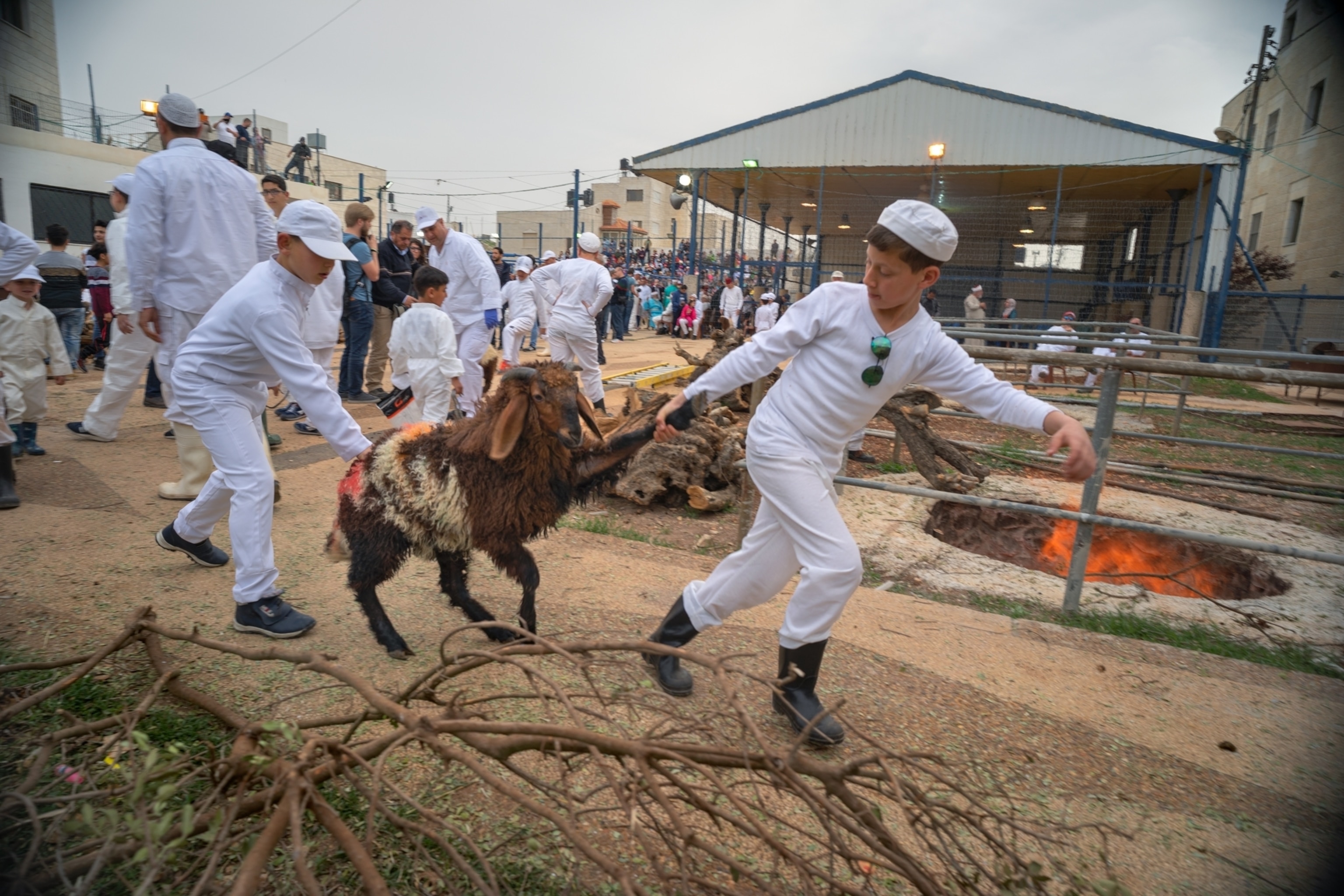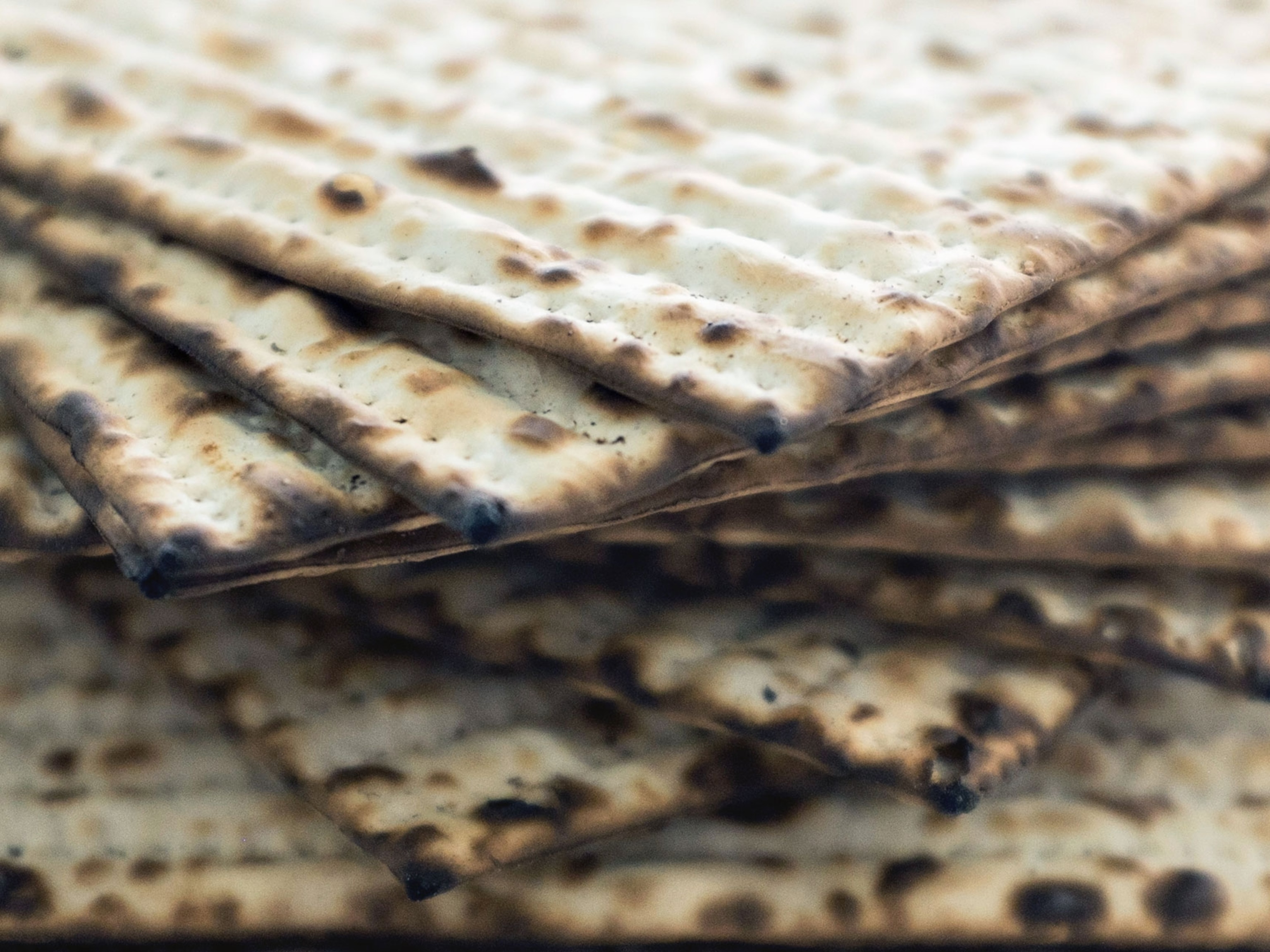Samaritans are one of the world’s smallest religious groups, claiming descent from three of the 12 tribes of ancient Israel. They consider themselves the true observants of Israelite religion, and view Judaism as a religious practice corrupted during the Babylonian exile. This separation is clearly delineated in the geography of the Holy Land: While Mount Moriah in Jerusalem is where the Jewish Temple was decreed by God, the Samaritans followed the command of that same God and built their temple on the peak of Mount Gerizim, some 30 miles to the north.


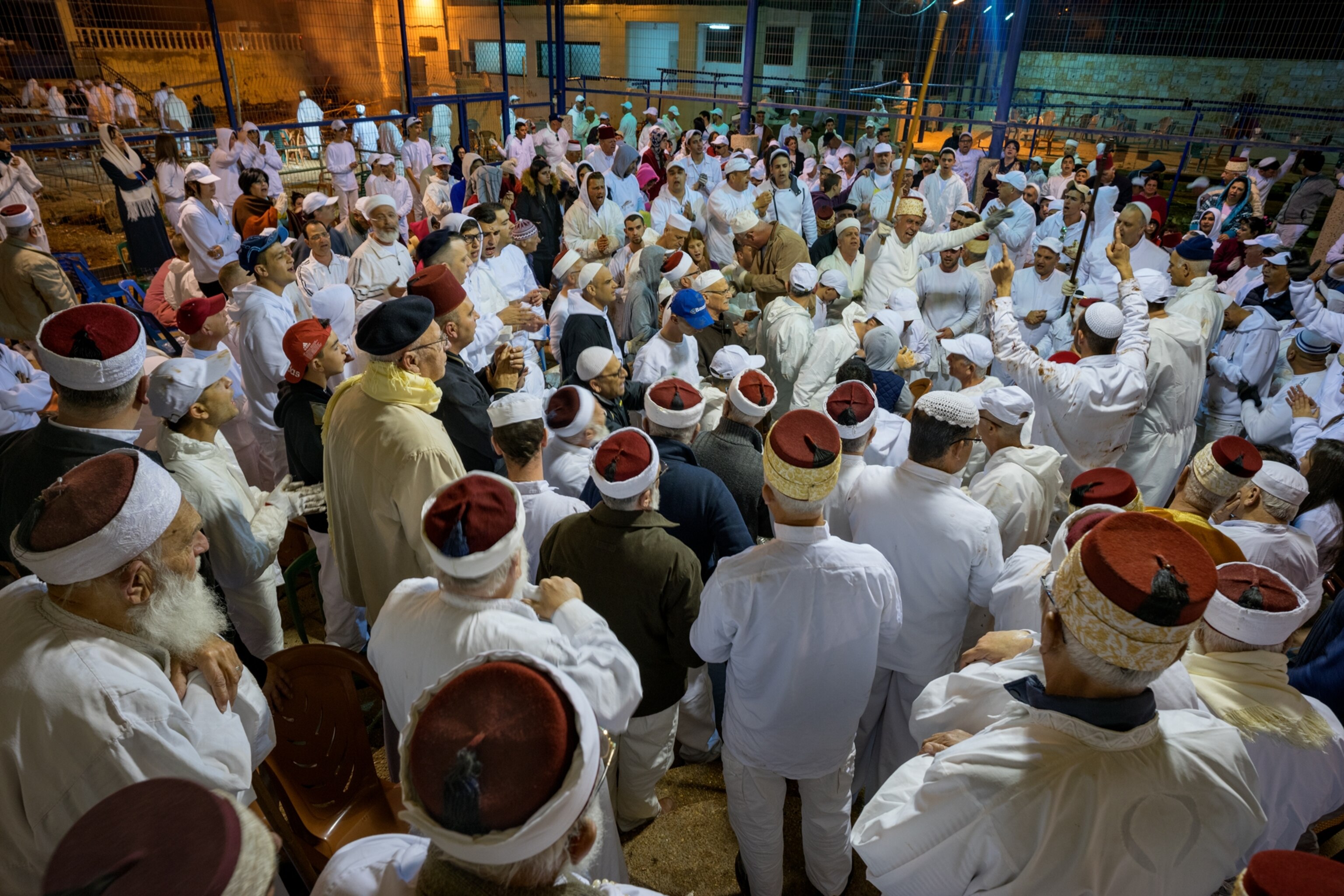

Today, Mount Gerizim, at an elevation of almost 3,000 feet, is one of the highest points in the Palestinian territories, and commands a sweeping view of the bustling city of Nablus and the West Bank villages that surround it. On its ridge is the village of Kiryat Luza, where, on the eve of each Passover, the roughly 800 members of the Samaritan community gather to pray and observe their liberation from slavery in Egypt.
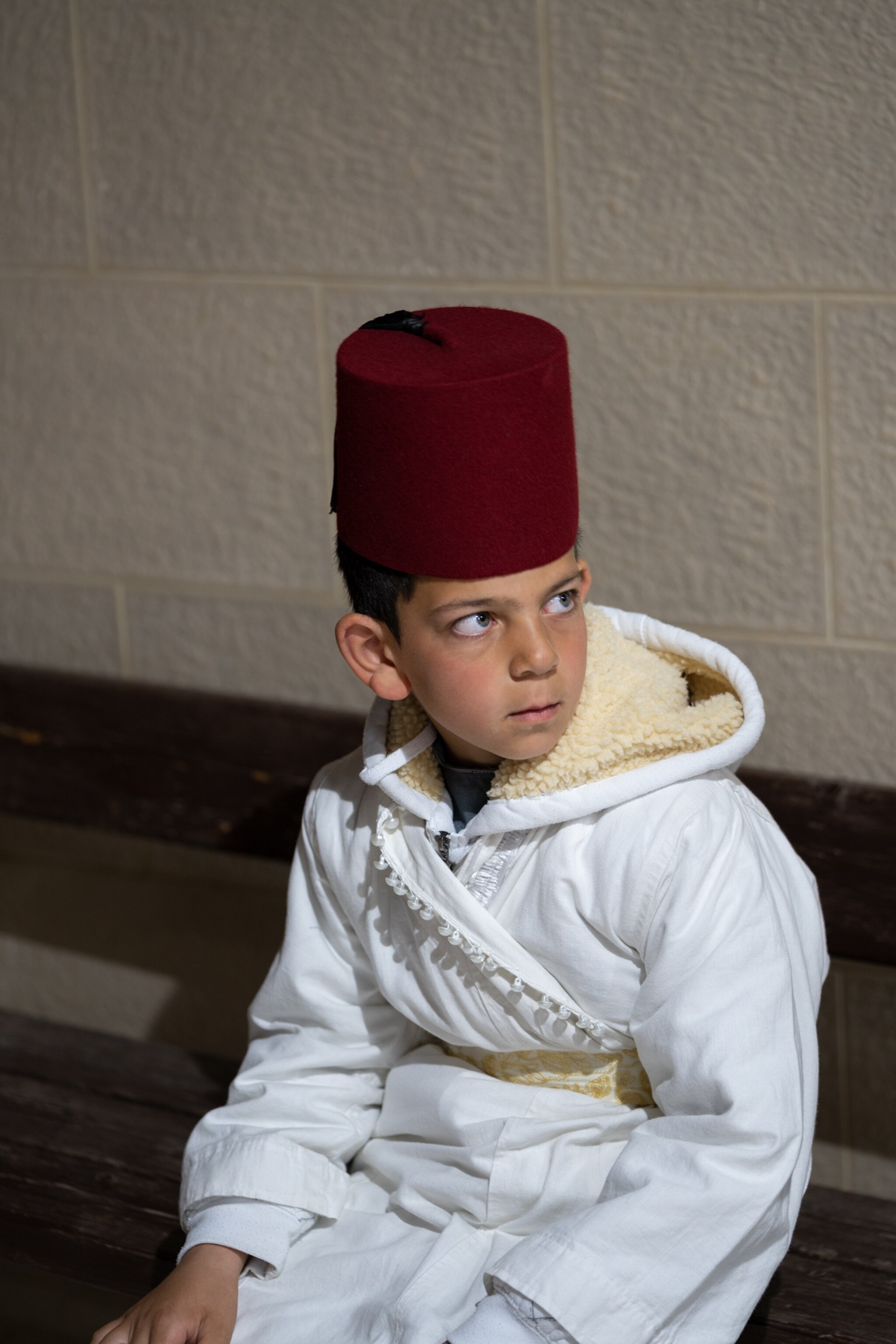

In remembrance of that event, the Samaritans follow the Torah mandate that a sheep or lamb be sacrificed on Passover eve and consumed before dawn of the next day. In Kiryat Luza, this is a communal event, in which prayers are recited and dozens of animals are dispatched simultaneously by men dressed in all white and then roasted in enormous earthen pits. In the hours after midnight, the meat is heaped on trays alongside bundles of bitter herbs and dished out in a celebratory community gathering under the stars.

Seven days later, the Samaritan community marks the end of Passover with a more solemn event. Once again under the stars just a few hours before dawn, the white-robed men of the community gather in front of their small synagogue, young sons beside them, rubbing the sleep from their eyes.
Led by their head priest cradling a silver Torah case, the men ascend Mount Gerizim in the darkness, climbing stone steps past the remains of their temple, destroyed by the Hasmoneans in the early second century B.C., and the rubble of a church built on their sacred peak by the Byzantine emperor Zeno some 600 years later. At points along the ascent, they stop to pray and then continue on as the dawn sky turns periwinkle and the paper-thin blossoms of scarlet poppies begin to unfurl.
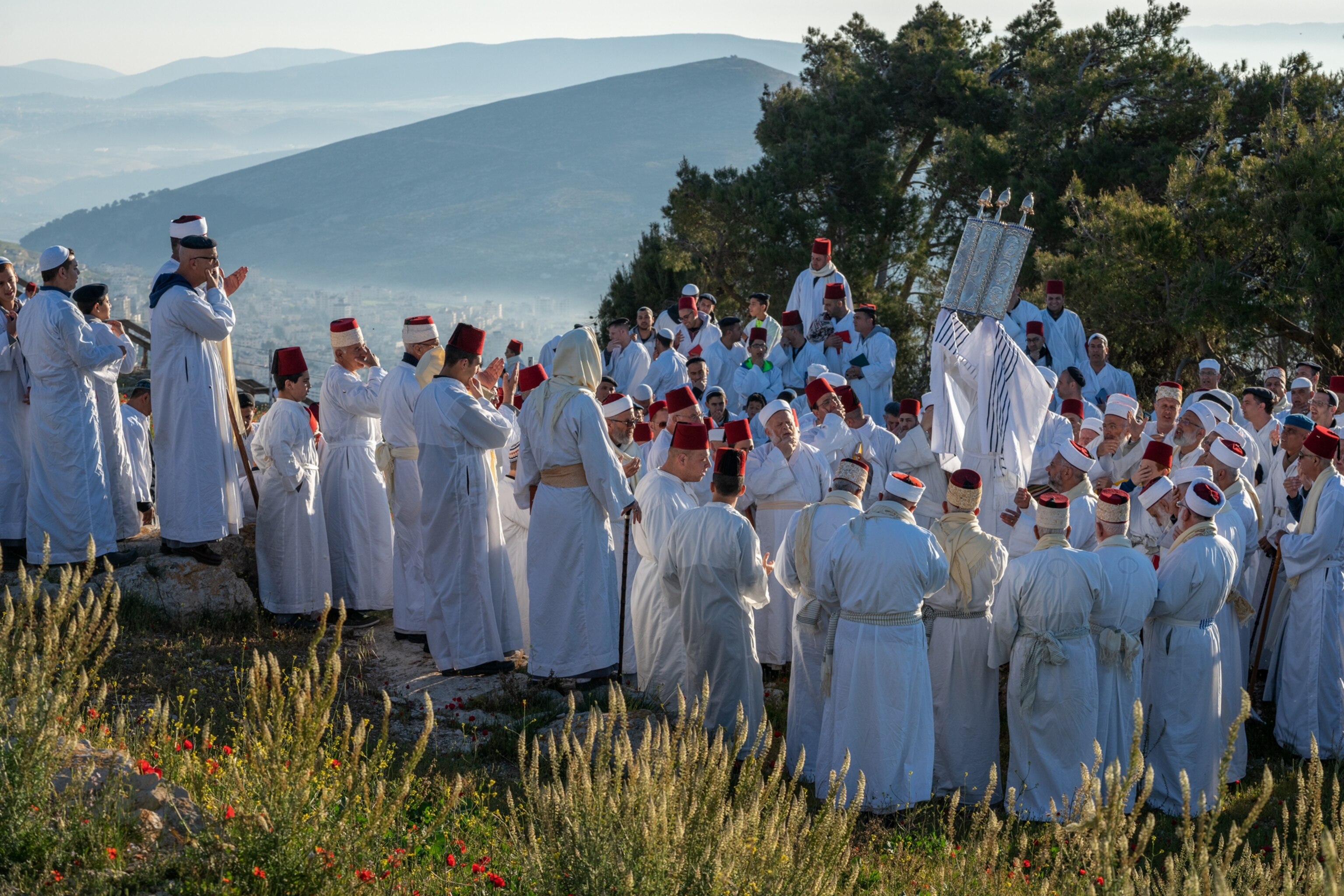
The procession ends near a stone slab believed by Samaritans to be the site where Abraham intended to sacrifice his son Isaac. The sun breaks above the horizon and the high priest raises the shining Torah case above his head as he concludes the group prayer. It’s a spring day on Mount Gerizim, and once again this tiny community has gathered together to fulfill its sacred duties before God.
Related Topics
You May Also Like
Go Further
Animals
- Soy, skim … spider. Are any of these technically milk?Soy, skim … spider. Are any of these technically milk?
- This pristine piece of the Amazon shows nature’s resilienceThis pristine piece of the Amazon shows nature’s resilience
- Octopuses have a lot of secrets. Can you guess 8 of them?
- Animals
- Feature
Octopuses have a lot of secrets. Can you guess 8 of them?
Environment
- This pristine piece of the Amazon shows nature’s resilienceThis pristine piece of the Amazon shows nature’s resilience
- Listen to 30 years of climate change transformed into haunting musicListen to 30 years of climate change transformed into haunting music
- This ancient society tried to stop El Niño—with child sacrificeThis ancient society tried to stop El Niño—with child sacrifice
- U.S. plans to clean its drinking water. What does that mean?U.S. plans to clean its drinking water. What does that mean?
History & Culture
- Gambling is everywhere now. When is that a problem?Gambling is everywhere now. When is that a problem?
- Beauty is pain—at least it was in 17th-century SpainBeauty is pain—at least it was in 17th-century Spain
- The real spies who inspired ‘The Ministry of Ungentlemanly Warfare’The real spies who inspired ‘The Ministry of Ungentlemanly Warfare’
- Heard of Zoroastrianism? The religion still has fervent followersHeard of Zoroastrianism? The religion still has fervent followers
- Strange clues in a Maya temple reveal a fiery political dramaStrange clues in a Maya temple reveal a fiery political drama
Science
- NASA has a plan to clean up space junk—but is going green enough?NASA has a plan to clean up space junk—but is going green enough?
- Soy, skim … spider. Are any of these technically milk?Soy, skim … spider. Are any of these technically milk?
- Can aspirin help protect against colorectal cancers?Can aspirin help protect against colorectal cancers?
- The unexpected health benefits of Ozempic and MounjaroThe unexpected health benefits of Ozempic and Mounjaro
- Do you have an inner monologue? Here’s what it reveals about you.Do you have an inner monologue? Here’s what it reveals about you.
Travel
- Follow in the footsteps of Robin Hood in Sherwood ForestFollow in the footsteps of Robin Hood in Sherwood Forest
- This chef is taking Indian cuisine in a bold new directionThis chef is taking Indian cuisine in a bold new direction
- On the path of Latin America's greatest wildlife migrationOn the path of Latin America's greatest wildlife migration
- Everything you need to know about Everglades National ParkEverything you need to know about Everglades National Park
